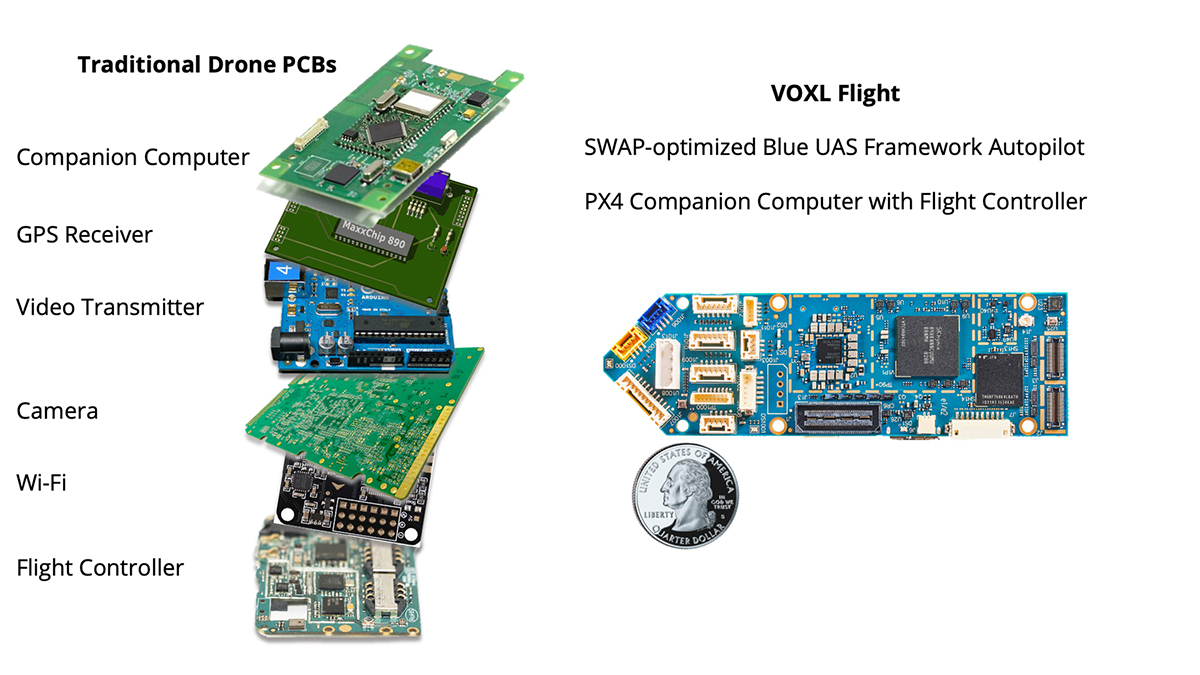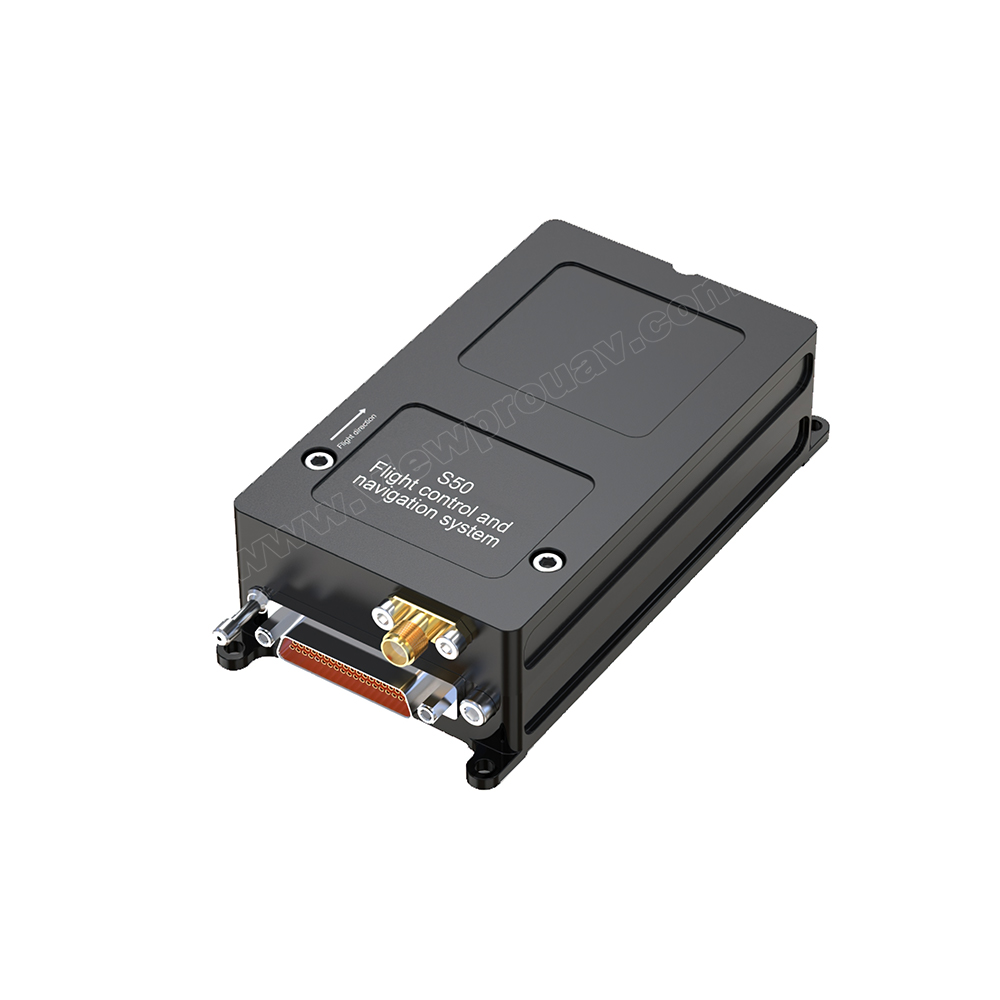SparkNavi Drone Flight Controller and GNSS/INS Made in Taiwan: Accuracy and Development
Discovering the Role of Drone Trip Controllers in Enhancing Trip Stability and Navigating Performance
The advancement of drone innovation has actually dramatically increased the significance of flight controllers, which offer as the mind of these aerial cars. By integrating real-time data from an array of sensors, flight controllers improve flight security and navigation performance, ensuring that drones can run smoothly also in complex settings.

Comprehending Flight Controllers
Flight controllers are essential parts in the functioning of drones, working as the minds that stabilize and handle trip procedures. These innovative gadgets procedure data from various sensors, including accelerometers, gyroscopes, and GPS, to guarantee that the drone maintains its desired trip course. The flight controller analyzes this information and performs commands based upon pre-defined formulas, making it possible for the drone to reply to ecological modifications, such as wind or barriers.
The key feature of a trip controller is to maintain security during trip. It attains this by making real-time modifications to the drone's motors and control surfaces, ensuring balance and control. Furthermore, modern trip controllers incorporate advanced functions such as waypoint navigating, permitting automated trip paths and enhanced functional effectiveness.
Recognizing the design of flight controllers is important for both professionals and enthusiasts. As technology breakthroughs, flight controllers have become extra compact and qualified, incorporating fabricated intelligence to enhance decision-making processes and adjust to intricate flight situations.
Secret Parts of Flight Security
Accomplishing optimum trip stability in drones depends on numerous vital elements that function in concert to make certain smooth and controlled procedures. Central to this security is the flight controller itself, which refines information from various sensors to keep the wanted flight perspective. This includes accelerometers and gyroscopes that measure activity and positioning, enabling for real-time adjustments to the drone's placement.
An additional critical part is the electronic rate controllers (ESCs), which control the power supplied to the motors. By finely tuning motor speeds in response to flight controller commands, ESCs help keep balance and combat disruptions caused by wind or unexpected activities.
Furthermore, the layout of the drone's frame plays a critical duty in trip stability. A well-structured framework minimizes resonances and enhances the general aerodynamic account, adding to smoother trip qualities. Lastly, the integration of innovative formulas within the flight controller aids in predictive adjustments, guaranteeing a responsive and versatile flight experience.
Together, these parts create a cohesive system that enhances a drone's stability, allowing for precise maneuvering and enhanced performance in various trip conditions.
Navigating Effectiveness Methods
Effectiveness in navigation is essential for enhancing drone operations, especially in complicated settings. Efficient navigation strategies improve the capacity of drones to pass through challenging terrains and avoid barriers, thereby improving functional effectiveness and safety and security.
One famous technique is the execution of advanced GPS and inertial dimension units (IMUs) that give exact place tracking and orientation data. These modern technologies permit drones to calculate optimum trip paths in real-time, thinking about numerous elements such as wind problems and possible challenges.
An additional strategy entails using formulas for course planning and optimization. Algorithms such as A * and Dijkstra's algorithm can be deployed to identify the most efficient course while reducing energy intake and flight time. Moreover, incorporating machine understanding designs can enable drones to adaptively pick up from their atmospheres, enhancing navigation abilities through experience.

Effect On Autonomous Drones
The integration of sophisticated navigation methods has actually greatly changed the abilities of autonomous drones, allowing them to operate with higher autonomy and accuracy. SparkNavi drone flight controller and GNSS/INS made in taiwan. These enhancements index are largely connected to innovative trip controllers that utilize real-time information handling and sensing unit blend, permitting drones to navigate complicated atmospheres flawlessly
The influence on self-governing drones prolongs past simple navigating; it incorporates improved obstacle avoidance, boosted security during dynamic conditions, and boosted objective reliability. By leveraging formulas that integrate machine learning and expert system, drones can adapt to transforming conditions, making educated decisions that optimize their flight courses while lessening dangers.
Furthermore, the execution of durable flight controllers has promoted the implementation of intricate tasks, such as aerial evaluations, delivery services, and farming monitoring, with marginal human treatment. This capability not only improves procedures but additionally lowers human error, thereby improving total security.
As an outcome, the functional scope of self-governing drones has actually expanded significantly, making them crucial tools in numerous industries. Their ability to execute efficiently in varied situations highlights the critical role that advanced flight controllers play fit the future of unmanned aerial systems.
Future Patterns in Trip Control
Frequently, advancements in flight control technology are poised to redefine the landscape of drone operations in the coming years. Arising trends indicate a considerable shift towards improved expert system (AI) combination, allowing trip controllers to refine real-time data a lot more effectively. This advancement will certainly facilitate enhanced decision-making capacities, permitting drones to adjust to vibrant ecological problems autonomously.
Additionally, the execution of machine learning formulas is anticipated to boost anticipating upkeep, consequently lessening downtime and extending the lifecycle of drone elements. This positive approach to maintenance will certainly be critical as drone applications increase throughout numerous markets, from agriculture to logistics.

.jpg)
Last but not least, developments in safe interaction methods will certainly deal with security and governing issues, guaranteeing that drones can run perfectly in overloaded airspaces (SparkNavi drone flight controller and GNSS/INS made in taiwan). Collectively, these fads aim towards a future where flight control systems are not only smarter and a lot more effective but also qualified of running safely in a significantly incorporated airspace
Conclusion
Finally, drone trip controllers are essential to improving trip security and navigating efficiency through the advanced processing of sensor information. By maintaining ideal flight mindsets and employing sophisticated informative post algorithms for path optimization and challenge evasion, these controllers significantly contribute to the freedom and functional safety and security of drones. As modern technology continues to develop, further innovations in trip control systems are prepared for, assuring better efficiency and broadened abilities in the realm of unmanned aerial vehicles.
By incorporating real-time information from a variety of sensors, trip controllers improve trip security and navigating efficiency, making sure that drones can run efficiently also in complicated settings.Flight controllers are important elements in the functioning of drones, serving as the minds that take care of and support trip operations. Additionally, modern-day trip controllers incorporate advanced attributes such as waypoint navigation, allowing for automated flight paths and enhanced functional effectiveness.
Central to this stability is the trip controller itself, which refines information from numerous sensors to keep the preferred trip perspective.In final thought, drone trip controllers are indispensable to boosting flight security and navigating efficiency via more the sophisticated handling of sensor information.